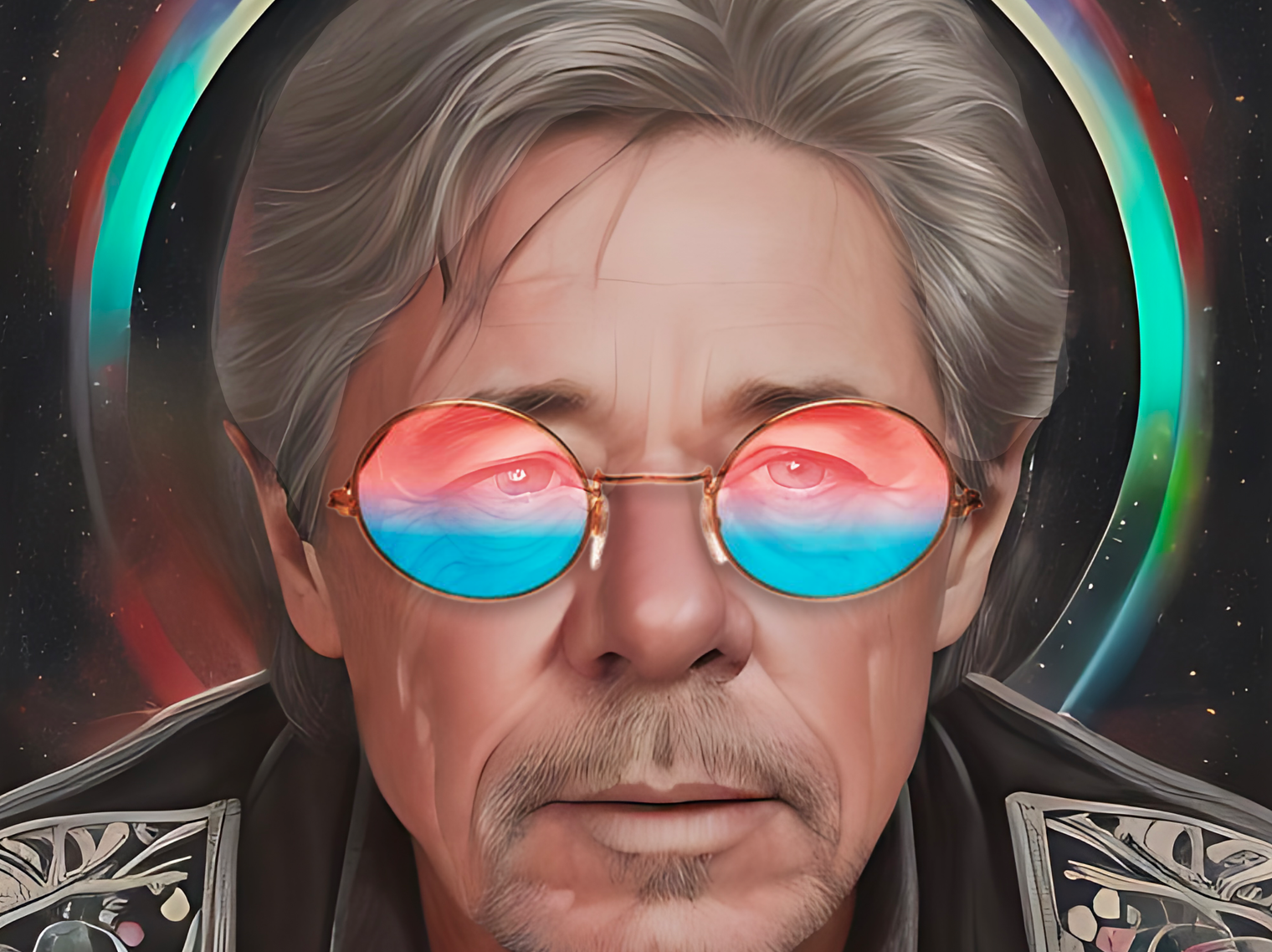
Barry ‘Dr Baz’ Ferrier is an Australian musician and multimedia artist based in Bangalow. He is a champion of live music, a multi-instrumentalist, singer and multi-awardwinning songwriter/ composer. Sally Schofield caught up with him to find out about his recent work – award-winning experimental film making using artificial intelligence. There’s something heady about riding the first wave of any new movement. Barry Ferrier has experienced many such moments in his long career in music and media, and he is no stranger to change or innovation in the creative industries. Over the past 50 years, Barry has fused his interests in music and technology, becoming an early adopter of innovations such as the Fairlight synthesiser, multimedia production, web design, and more recently, the use of generative AI imagery and animation to create music videos and short films.
His first foray, the short film Entombed, was based on a script by fellow local, Des Collins, written some 25 years ago and created by Barry solely using early-generation AI-driven tools. The output of nascent AI imagery tools naturally lent itself, Barry says, to a mockumentary-style approach to film making. This bedroom/studio creation went on to win ‘Best Experimental Film’ at the 2024 New York Arthouse Film Festival and has been a finalist or nominated for a fistful of other awards around the world. “It’s opened some doors for me, and at this point in my career, it’s great to have a new wave of recognition and a little bit of excitement,” says Barry, who holds a PhD focused on how technology has the power to change art.
Local iconic comedian and Latin guitarist, Cuban-born George Smilovici, took notice of Barry’s award-winning AI endeavours and sought out his skills to create some music videos for his new releases. “And lo and behold, we’ve won an award for each of them,” says Barry. “So, I’ve ended up with four awards, and I’ve been in 14 finals this year so far. It’s been incredible, and it’s the AI that’s allowed me to do that.”
In an entertainment industry that forces creatives to adapt or die, it seems that embracing technology—whether it’s the internet, social media, streaming, or exploring the potential of generative AI—is the only way forward. “You’ve got to dive in and explore it as far as you can and push the boundaries. I’m very interested in AI video technology because it frees you up to create or tell stories that might have been difficult to tell as a ‘guerrilla filmmaker’,” says Barry.
The past 18 months have seen lightningfast changes in the processing speed and capabilities of these tools, something that is both exciting and a little breathtaking. Barry is happy to be navigating these relatively uncharted waters, using the ever-changing tools at his disposal—some open source, others subscription-based—to create animated content that would have previously required huge budgets, big studios, and lots of time.
One tremendous benefit of these tools is in the storyboarding of highly visual, dystopian, alternate realities—speculative worlds that may be better pitched to production companies if accompanied by a draft AI treatment that helps conceptualise these more abstract, highly imaginative narratives.
Generative AI tools, in some ways, have democratised content production and opened up new possibilities, but some reject the technology as an inauthentic alternative or simply creative cheating. Australian musician Nick Cave, for instance, once described an AI-inspired version of his own lyrical style as ‘a grotesque mockery’, decrying the absence of the human touch from the machine’s output.
Barry concedes that AI-assisted creativity may well require a separate category for awards and prizes, allowing apples to be compared with apples. Many pioneers see AI as an addition, not a replacement, to the suite of tools a creator has available.
“When electronic music first came out, people felt the same sort of disquiet, but what’s actually happened is it’s become a new category rather than replacing any music,” says Barry. Likewise, realistic painting was perfected and then almost made redundant with the invention of photography. “The 20thcentury art world was filled with innovation— Cubism, Surrealism, Abstract Art—all these new ways of filling an empty canvas that no one had dreamed of, and I feel like that’s what will happen here and now with AI.”
Technological innovation has often caused moral panic. Today, the target for our collective concern is Artificial Intelligence—robots replacing us in the workforce, becoming sentient, rebelling. Humans are widely suspicious of things they don’t understand. And yet, as you read this, AI functionality is being rolled out on our smart devices and PCs, on commonly used computer apps and websites without most of us realising it.
“I wrote a musical in 1984 about this called Goodnight World, and the premise was that the whole purpose of humanity was to make the perfect AI Android, that saved the planet and did everything properly—because humans aren’t doing a very good job of it,” he says. Sounds oddly prescient.
The reality is, there is already a great deal of good work being done by humans using AI technologies, and not just experimentation in the creative fields. When used ethically, considered critically, and regulated effectively, AI tools have the potential to streamline repetitive tasks, customise learning, and, most excitingly, improve medical diagnosis and health outcomes.
Governments, for instance, need to move swiftly to regulate the uses of this kind of technology, the processing power, environmental impacts, and capabilities of which seem to grow exponentially in the blink of an eye. “There’s definitely incredible potential for negative outcomes, especially in the hands of evil geniuses,” says Barry. “It’s not so much the technology itself; it’s how it’s going to be used.”